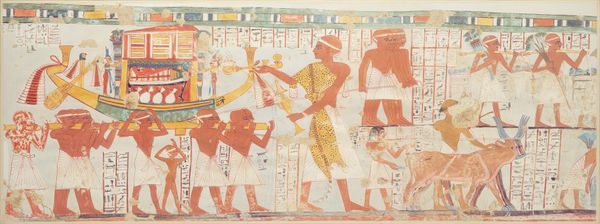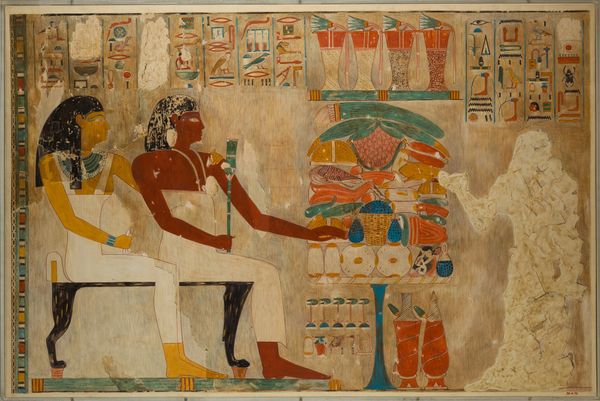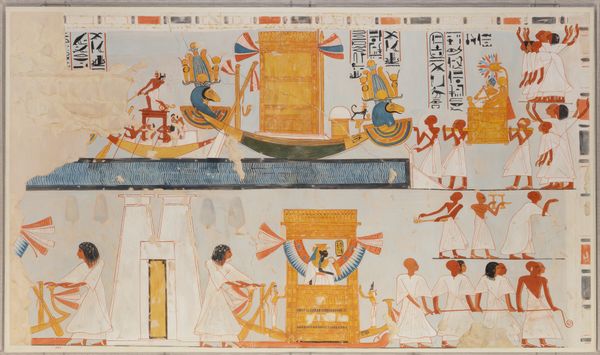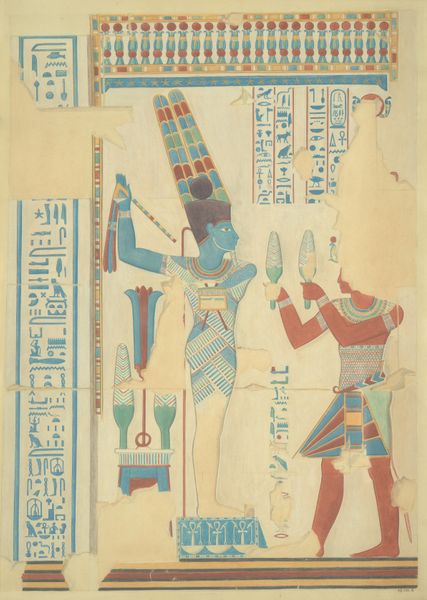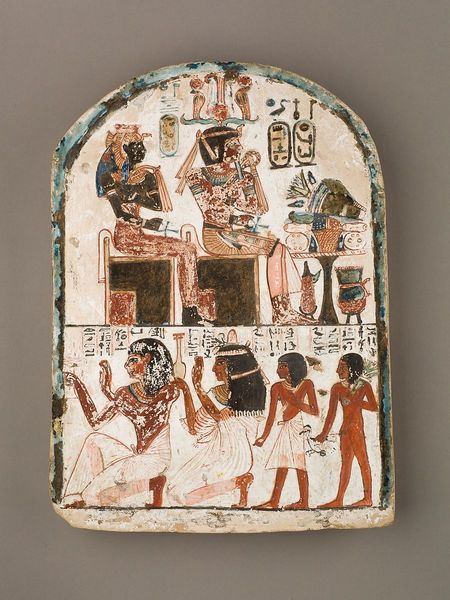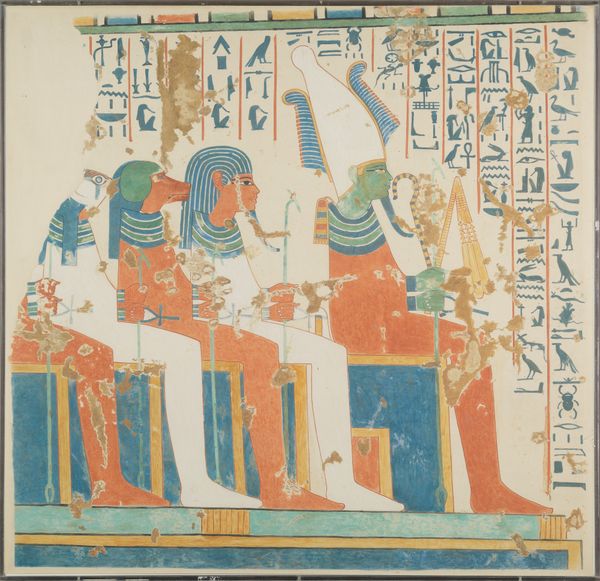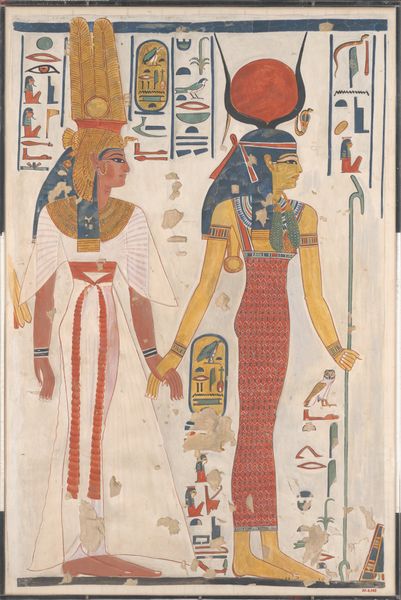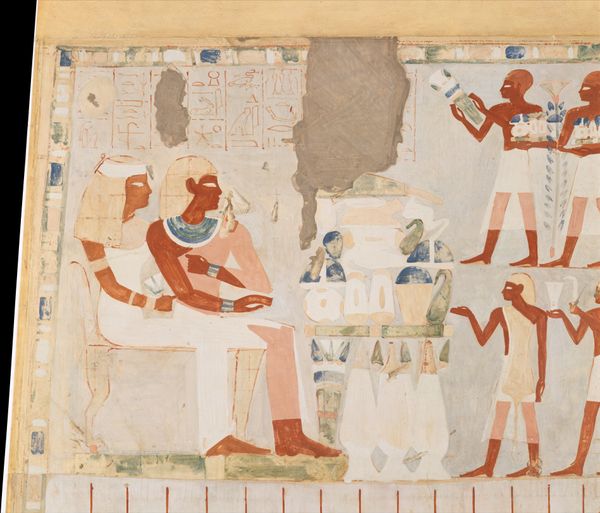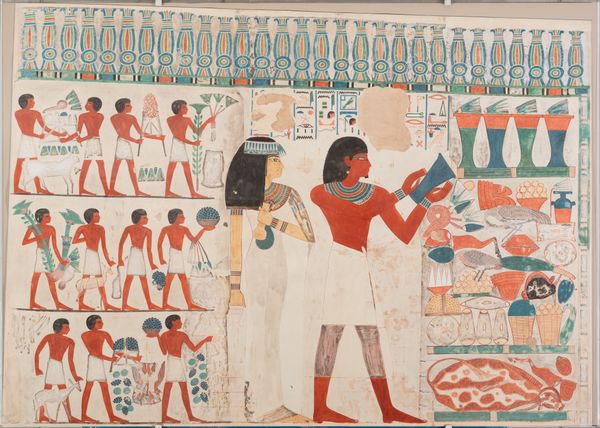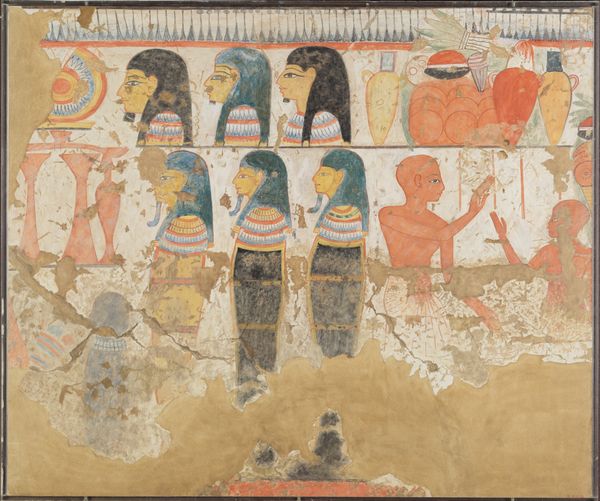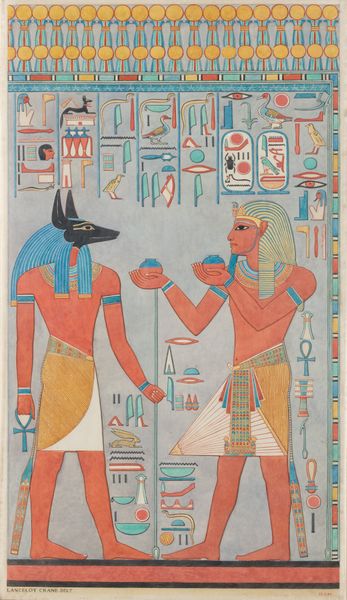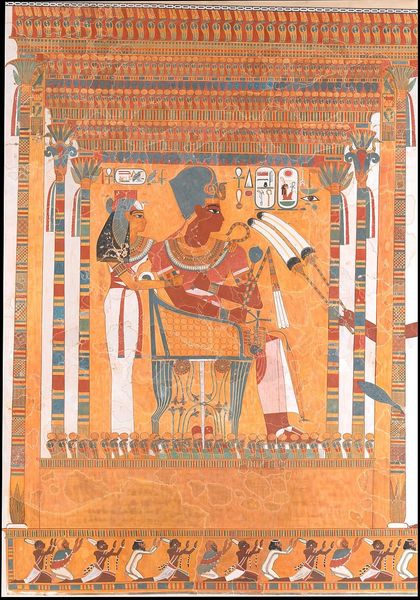
painting, fresco
#
narrative-art
#
painting
#
ancient-egyptian-art
#
figuration
#
fresco
#
ancient-mediterranean
#
mixed media
#
watercolor
Copyright: Public domain
Curator: Looking at this limestone fresco from ancient Egypt, one is immediately struck by the vibrancy and layered symbolism still preserved after millennia. The work is titled, "Fragment of a Doorjamb from the Tomb of Djehutynefer" and dates to approximately 1390 BC. Editor: Yes, the preservation is remarkable, almost deceptively fresh at first glance, and the hieroglyphs present a fascinating matrix. It certainly has an otherworldly aura. Tell me more about the means of its creation; it looks incredibly intricate. Curator: This fresco employs painting atop the prepared plaster of the doorjamb. Pigments ground from minerals and other natural sources would have been carefully applied, layer upon layer. The surviving fragment points to a significant investment of labor and materials. The scale also speaks volumes about resource control and prioritization, demonstrating the values of that time. Editor: The composition is wonderfully layered, even segmented. There's an abundance of avian and animal figures among what looks like offerings. Clearly, it represents a structured belief system. What is the role and purpose of all of the images, and how would an Ancient Egyptian have understood this doorjamb? Curator: Indeed. Many symbols here speak to prosperity, rebirth, and passage into the afterlife. Each carefully chosen image is also meant to actively facilitate and invoke those states of being through constant visual engagement. Editor: And from a purely constructionist perspective, you have to admire how these materials—ground stone, plaster, natural pigments—endure while so many contemporary items disappear rapidly from our waste streams. It highlights the radical shifts in materials we engage with now and suggests some reflection on material culture is necessary. Curator: I find it deeply compelling how the fragment invites reflections on materiality while it presents us with visual echoes of an advanced and structured cultural imagination from thousands of years ago. Editor: An engaging convergence. The images feel like invitations through the passage. The artist's hands remind me, as does the stone's cool persistence, that meaning doesn't merely exist, it gets constructed from interactions between things.
Comments
No comments
Be the first to comment and join the conversation on the ultimate creative platform.
